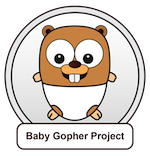A simple OAuth proxy for applications that cannot afford a web browser
The typical OAuth flow for authorizing an app to access user's account involves several HTTP requests and requires intercepting redirects. This is easy for web apps, but might be tricky or outright impossible for other kinds of applications, especially if the OAuth provider doesn't support PIN-based authentication.
Authomato can act as middleman for such programs, making the authentication flow simpler and more convenient to the user. With Authomato, the process of authorizing an app is very simple:
-
Issue a request to Authomato server with your app (consumer) name.
You will get a session ID (
sid) and URL that the user should visit. -
Display the URL you got or just open the browser. This will allow the user to authorize your application.
-
Wait on long poll request until you get the access token.
You can also hit the server periodically until the authentication flow is complete.
Once you have the access token, you can call the provider's API using any of the various OAuth client libraries available for almost any language.
First, define the OAuth providers you're using in oauth_providers.json:
{
"twitter": {
"requestTokenUrl": "http://twitter.com/oauth/request_token",
"authorizeUrl": "http://twitter.com/oauth/authenticate",
"accessTokenUrl": "http://twitter.com/oauth/access_token"
}
}
Next, add your consumers ("apps") to oauth_consumers.json:
{
"mytwitterapp" : {
"provider": "twitter",
"key": "<OAuth key for mytwitterapp>",
"secret": "<OAuth secret for mytwitterapp>"
}
}
Finally, run the server:
$ ./authomato
2013/01/26 21:12:22 Initializing Authomato v0.0.1...
2013/01/26 21:12:22 Loaded 1 OAuth consumer(s)
2013/01/26 21:12:22 HTTP callbacks will be routed to http://127.0.0.1:8080/
2013/01/26 21:12:22 Listening on port 8080...
For additional options, invoke the program with -help flag.
All requests use simple HTTP query parameters and return plain text for maximum interoperability. Error conditions are communicated as HTTP status codes.
Start the OAuth flow.
Query parameters:
app: name of the OAuth consumer ("application"), as defined in oauth_consumers.json
Response body contains the following data as plain text, delimited by whitespace:
- session ID (
sid) identifying this authentication flow - URL of authorization page that should be displayed to the user
Check the state of OAuth flow, retrieving the access token if available.
Query parameters:
sid: session ID received when starting the flow- (optional)
wait: wait time in seconds (default 0), ortrueif the request should block until authorization is finished
Returns HTTP status 200 (OK) with access token in response body (token & secret delimited by whitespace).
Returns HTTP status 100 (Continue) after wait time (if any) was exceeded before access token became available.
This is a minimalistic example of client application for Authomato written as shell script:
#!/bin/sh
app=$1
server=$([ -n "$2" ] && echo "$2" || echo "127.0.0.1:8080")
start_response=($(curl -s 'http://'"$server"'/oauth/start?app='"$app"))
sid=${start_response[0]}
url=${start_response[1]}
echo "Please visit the following URL to complete the authentication process:"
echo $url
poll_response=($(curl -s 'http://'"$server"'/oauth/poll?sid='"$sid"'&wait=true'))
echo "Obtained access token: token=${poll_response[0]} secret=${poll_response[1]}"
This is mostly a toy project to try out Go as a language.
- Recognize HTTP Accept: header and provide different types of output, like JSON.
- Throttle non-blocking polls through HTTP Retry-After: and Refresh: headers in response to /oauth/poll
- Split into several modules
- Add tests

